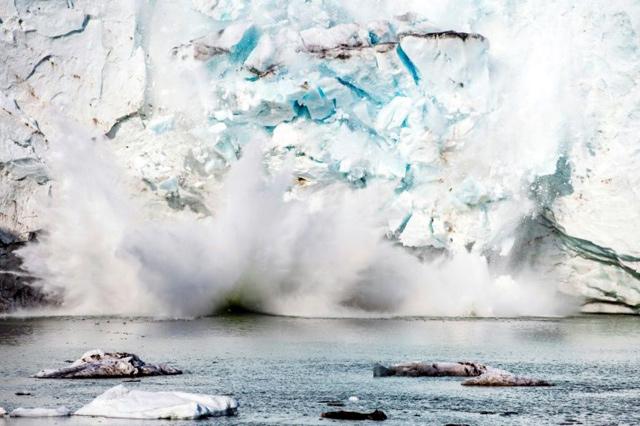LONDON — Stronger winds which have cooled the surface of the Pacific Ocean could explain what is likely to be a temporary slowdown in the pace of global warming this century, researchers said.
Last year, scientists on the Intergovernmental Panel on Climate Change (IPCC) said the pace of temperature rise at the Earth’s surface had slowed over the past 15 years, even though greenhouse gas emissions, widely blamed for causing climate change, have risen steadily.
Past research has linked the slowdown in the pace of warming to factors such as a build-up of sun-dimming air pollution in the atmosphere or a decline in the sun’s output. Others suggest the deep oceans may be absorbing more heat.
A study published in the journal Nature Climate Change on Sunday said stronger Pacific trade winds — a pattern of easterly winds spanning the tropics — over the past two decades had made ocean circulation at the Equator speed up, moving heat deeper into the ocean and bringing cooler water to the surface.
The winds have also helped drive cooling in other ocean regions.
“We show that a pronounced strengthening in Pacific trade winds over the past two decades is sufficient to account for the cooling of the tropical Pacific and a substantial slowdown in surface warming,” said the study, led by scientists from the University of New South Wales in Australia.
“The net effect of these anomalous winds is a cooling in the 2012 global average surface air temperature of 0.1-0.2 degrees Celsius, which can account for much of the hiatus in surface warming since 2001.”
Cooling down
The study’s authors, including scientists from other research centres and universities in the United States, Hawaii and Australia, used weather forecasting and satellite data and climate models to make their conclusions.
“This hiatus could persist for much of the present decade if the trade winds trends continue; however, rapid warming is expected to resume once the anomalous wind trends abate,” the study said.
“If the anomalously strong trade winds begin to abate in the next few years, the model suggests the present hiatus will be short-lived, with rapid warming set to resume soon after the wind trends reverse,” it added.
Commenting on the study, Richard Allan, professor of climate science at Britain’s University of Reading, said: “These changes are temporarily masking the effects of man-made global warming.”
The fact that temperatures have risen more slowly in the past 15 years despite rising greenhouse gas emissions has emboldened sceptics who challenge the evidence for man-made climate change and question the need for urgent action.
The IPCC does not expect the hiatus to last and has said temperatures from 2016-35 were likely to be 0.3-0.7 degrees Celsius warmer than in 1986-2005.
“More than 93 per cent of the warming of the planet since 1970 is found in the ocean,” said Steve Rintoul at Australia’s CSIRO Marine and Atmospheric Research and lead author of the chapter on oceans in the IPCC’s latest climate report.
“If we want to understand and track the evolution of climate change we need to look in the oceans. The oceans have continued to warm unabated, even during the recent ‘hiatus’ in warming of surface temperature.”

















